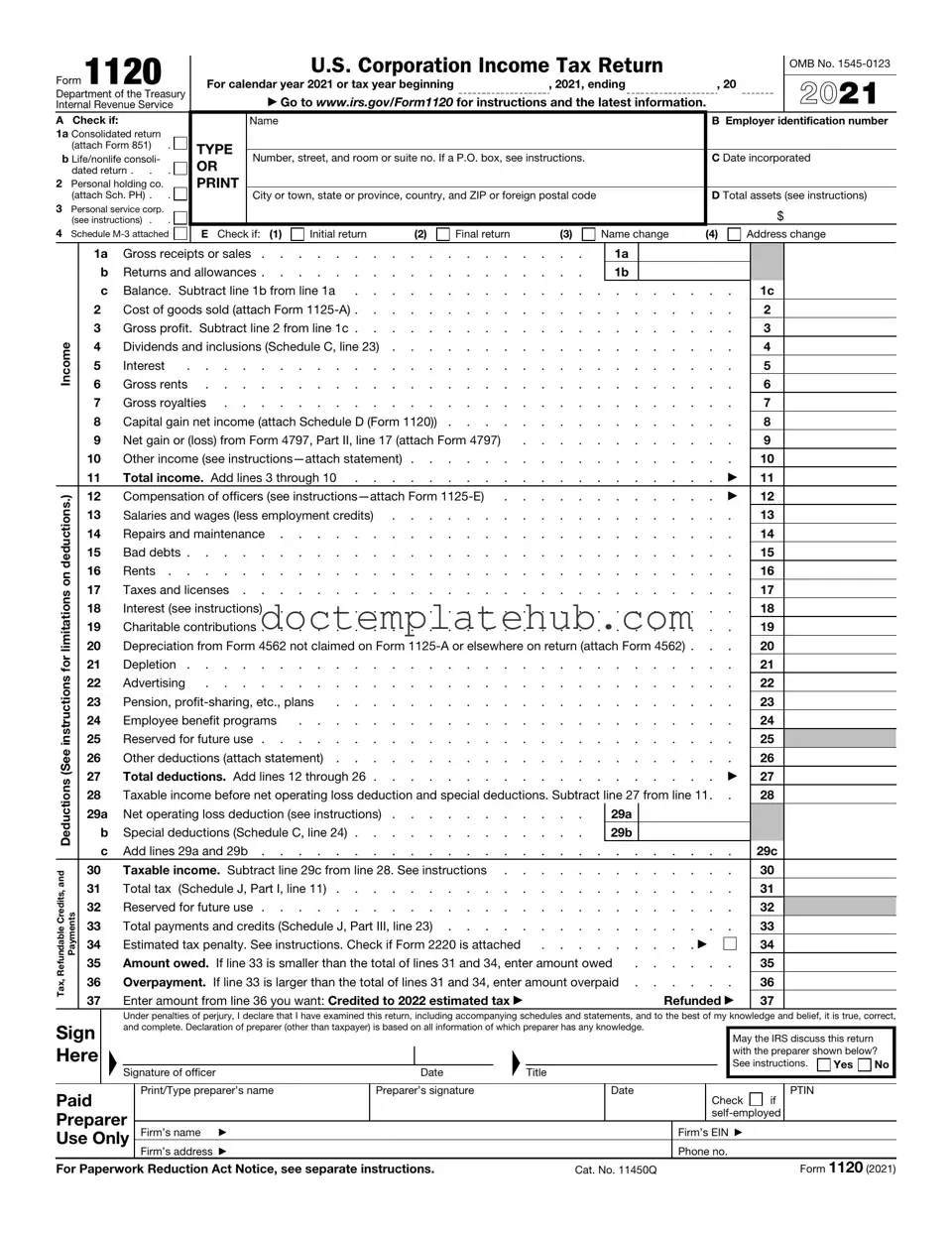What is the IRS Form 1120?
The IRS Form 1120 is the U.S. Corporation Income Tax Return. Corporations use this form to report their income, gains, losses, deductions, and credits. It is essential for determining the tax liability of a corporation for a given tax year.
Who needs to file Form 1120?
Any corporation operating in the United States must file Form 1120. This includes C corporations, which are taxed separately from their owners. S corporations, however, file a different form (1120S) and do not pay federal income tax at the corporate level.
When is Form 1120 due?
Form 1120 is typically due on the 15th day of the fourth month after the end of the corporation’s tax year. For most corporations that follow the calendar year, this means the form is due on April 15. If the due date falls on a weekend or holiday, the deadline is extended to the next business day.
What information is required on Form 1120?
Form 1120 requires detailed information about the corporation’s income, deductions, and credits. This includes revenue from sales, cost of goods sold, operating expenses, and any other income or deductions. Additionally, the corporation must provide its name, address, and Employer Identification Number (EIN).
Can a corporation get an extension to file Form 1120?
Yes, a corporation can request a six-month extension to file Form 1120 by submitting Form 7004. However, this extension only applies to the filing of the form, not the payment of any taxes owed. Payment must still be made by the original due date to avoid penalties and interest.
What happens if a corporation fails to file Form 1120?
If a corporation fails to file Form 1120 on time, it may face penalties. The IRS typically imposes a penalty based on the amount of unpaid tax. Additionally, failure to file can lead to interest charges on any taxes owed. It is important to file on time to avoid these consequences.
Can Form 1120 be filed electronically?
Yes, Form 1120 can be filed electronically. The IRS encourages electronic filing as it is faster and more efficient. Corporations can use IRS-approved e-file providers to submit their returns electronically. This method also allows for quicker processing and confirmation of receipt.
What if a corporation needs to amend Form 1120?
If a corporation needs to amend a previously filed Form 1120, it should file Form 1120-X, Amended U.S. Corporation Income Tax Return. This form allows the corporation to correct any errors or make changes to its original return. It is important to provide clear explanations for the amendments made.
Where can a corporation find help with Form 1120?
Corporations can find assistance with Form 1120 through the IRS website, where they can access instructions and resources. Additionally, tax professionals, accountants, or tax preparers can provide guidance and help ensure that the form is completed accurately.
What records should a corporation keep related to Form 1120?
Corporations should maintain detailed records of all income, expenses, and deductions reported on Form 1120. This includes receipts, invoices, bank statements, and any other documentation that supports the information provided on the tax return. Keeping these records for at least three years is advisable in case of an audit.
